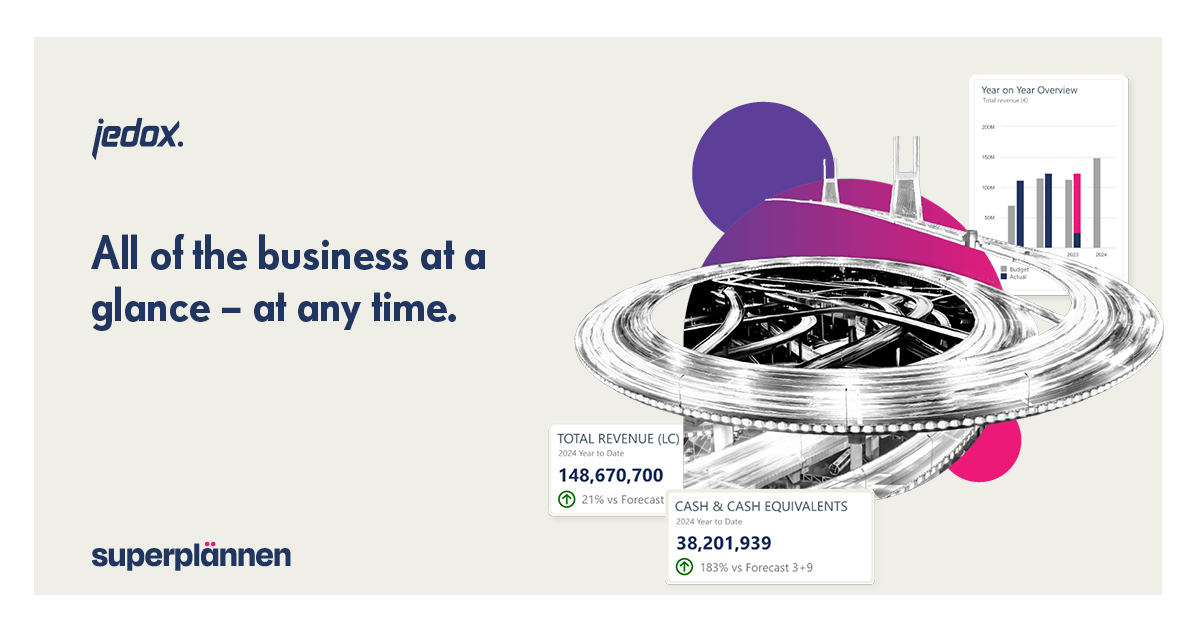
How management reporting helps organizations spot challenges and opportunities
While management reporting has been a mainstay in businesses for a long time, it’s become a more invaluable tool for senior managers and C-suite executives who seek greater insight into their organization’s day-to-day financial performance and operations. That’s because advanced technologies, such as predictive analytics, automation and artificial intelligence, have supercharged the tool to provide even more timely, transparent and relevant evidence-based information.
Such technologies have enabled better collection, integration and analysis of data from ERP/CRM systems and other sources. The reporting process has also become more automated, allowing managers to prepare reports in a fraction of the time it took before, while data visualization has helped stakeholders spot trends, errors, inconsistencies, and other issues at a glance. As a result, leadership is becoming better informed and more confident in their business decisions to unlock and build greater value in their organizations.
That’s not to give the impression that finance professionals and other stakeholders in an organization have fully implemented and are effectively using management reporting systems and software. Surveys have shown that many organizations still employ manual processes to create management reports, which slow down productivity and shift focus away from business-facing activities. And many leaders still grapple with data quality issues and/or creating a standardized format so stakeholders can view a single version of the truth.
Still, the promise of management reporting systems can’t be overstated. They can automate routine tasks, reduce complexity and accelerate the creation of reports. This allows an organization’s leaders to focus more on analysis, actionable insights and direction to better, more accurate decision-making. But there are other benefits for the organization such as greater communication and collaboration among different departments and personnel. It may also improve individual performance and productivity, boosting morale, as well as potentially create a data-driven culture to ensure continual business development.
What is management reporting?
Management reporting is a tool that helps managers and senior executives gain better insight and understanding across their organizations’ current activities, enabling them to evaluate operations and track performance at any time. Data collected from different departments, functions and cost centers are analyzed and presented in reports so executives can make valid, data-driven decisions with the aim of improving an organization’s efficiency and performance. Management reports, such as sales and marketing documents, are internal and provide information about key performance indicators, which helps organizations learn whether they’re meeting strategic goals.
Management reporting vs. financial reporting
There are several key differences between management reports and financial reports.
Management Reporting
- Provides actionable information about current and detailed financial and operational performance as needed to help decision-makers predict trends, make changes and/or spot future growth opportunities.
- Primarily prepared for internal use by managers and C-suite executives.
- Customizable and not mandatory. More than likely contains proprietary and confidential information.
- Examples of reports include sales and marketing, profit and loss, employee performance and environmental compliance.
Financial Reporting
- Is a type of management reporting.
- Is a look back at an organization’s historical statements and data, providing a bird’s-eye view of overall growth and development over either monthly, quarterly or annually, but aren’t designed to influence decisions.
- Mainly prepared for external review for banks, investors, suppliers and/or regulators.
- Statutorily required for compliance and legal purposes and follow GAAP (Generally Accepted Accounting Principles) guidelines.
- Examples of reports include profit and loss statement, balance sheet, accounts payable and receivable and statement of cash flows.
Types of management reports
There are many types of management reports that can be culled and assembled from across an organization. They include:
- Sales and marketing reports
Sales analysis
Marketing campaign
Customer acquisition cost
Customer lifetime value - Financial
Profit and loss
Balance sheet
Cash flow
Realization rate
Utilization rate - Inventory management
Stock status
Inventory forecast - Performance
Employee performance
Employee retention and turnover rate
Project performance - Compliance
Occupational health and safety
Environmental compliance
What makes a management report useful?
Powerful management reports should provide critical information that shows where the business stand. Such reports enable a management team to be more plugged into their operations and performance. Why is there so much buzz about them now?
- Senior managers, CEOs, CFOs, and other executives can gain deeper insight and transparency into their organizations, enabling them to see where they’re headed, reducing uncertainty and allowing them to spot trends and make course corrections, if needed.
- Leaders can get a greater understanding of KPIs, which measure specific metrics against an organization’s goals and benchmarks and which can point to areas of strength and weakness.
- Managers constantly have questions about specific areas within the organization whether it’s a business unit or particular project. Management reports can drill down to those areas and provide timely and updated analyses in those programs or units to identify problems and get them addressed before they become full blown.
- Sharing the same information between leadership and employees also means better communication and collaboration, building trust and boosting engagement within the organization.
How to create a management report
- Determine purpose: What is the purpose of the report? What are its objectives? Who is the audience — managers, C-suite executives and/or other stakeholders? How will the audience use the report? What’s on their mind that they want the report to address? The report should communicate objectives to its intended audience, which will determine its content and complexity.
- Show KPIs: Identify and keep track of key performance indicators that measure results and/or success and are aligned with the objectives of the report. Including measurable targets and benchmarks for each KPI should help managers see what’s working and what isn’t at an instant.
- Think about content: It’s important to think about the data that will be needed in a management report, which will answer the specific question being asked. Organizations collect a vast amount of information from different sources, which can be overwhelming. It’s best to select the relevant data needed and ensure its integrity.
- Get feedback: Some organizations may benefit from including customer feedback in reports to help identify areas of strong or weak performance.
- Present it nicely: Reports should be visually appealing so managers and executives can clearly and promptly understand highlights, crucial information and important details up front. A report should tell a clear, concise story through data visualization such as heatmaps and other types of charts, interactive graphs and infographics, how-to guides, screenshots, tables and videos, among other assets.
- Make it a habit: It’s worth establishing a reporting interval — whether weekly, bi-weekly, monthly or quarterly — to provide managers with periodic monitoring of performance trends and/or updates to address specific issues and problems.
Challenges creating a management report
While management reporting is critical for any organization seeking to gain a better understanding of its operations and performance, there are several challenges in getting there.
Data accuracy
In data analytics, a widely used, well-known saying is “garbage in, garbage out.” That simply means the quality of an analysis is only as good as the quality of the data analyzed. If the data is “garbage” or faulty then the analysis will not be as accurate or informative. That could be dangerous if an organization is seeking to make predictions, spot trends and gain new opportunities. Data practices such as validation, verification and auditing can help ensure the integrity of reporting data.
Data integration
It’s no easy task to consolidate and integrate data from disparate sources and from diverse formats and structures. There are several steps needed to get the data into shape before it can be analyzed. Organizations may first have to implement a documented strategy that will outline how data from different sources will be moved, standardized and analyzed.
Data security
Management reporting typically involves using proprietary information. It’s incumbent that such confidential and sensitive data be secure. And that means implementing strict controls, encryption and anonymization, if necessary.
Changing needs
Organizations grow, develop and change. This means its leaders should periodically review their management reporting processes and practices to ensure alignment with the business.
Benefits of management reporting software
Jedox’s automated management reporting software solution is designed to collect data from a variety of resources, providing managers and executives with ad hoc customizable reports in a quick, timely and efficient manner. It is easy to use, reliable and secure, taking just a few clicks to create management reports so managers and senior executives can confidently make critical decisions.
Here are some benefits with Jedox:
- Efficiency: Create a dashboard quickly by simply dragging and dropping real-time content from multiple reports, workbooks and other resources from across your ERP/CRM systems. You don’t need to have extensive technical knowledge or training to use Jedox’s solution.
- Automation: Rather than manually creating a management report every time one’s needed, Jedox helps to automate and streamline processes, reducing time and effort in producing reports and dashboards.
- Communication and collaboration: When the same data and information is readily shared among all stakeholders within an organization, it improves communication, trust and greater, more effective collaboration to drive better outcomes.
- Simplicity: With complex data collected from a variety of operations, Jedox helps managers and senior executives see the big picture so they can be well-prepared to make more well-founded, better-informed decisions about their organization.
- Visualization: Jedox makes it simple to illustrate the latest performance data in dashboards using heatmaps and other charts, graphs, videos and other tools to effectively communicate a story.
- Artificial intelligence: While it can help automate processes and reduce time, AI’s predictive capabilities will help analyze and model vast quantities of information in a fraction of the time it would take manually, presenting unbiased and more reliable projected outcomes.
- Self-service: Jedox has a self-service tool that can help non-technically skilled managers to analyze and visualize data, which would shorten the time needed to get information and make decisions on critical matters.




